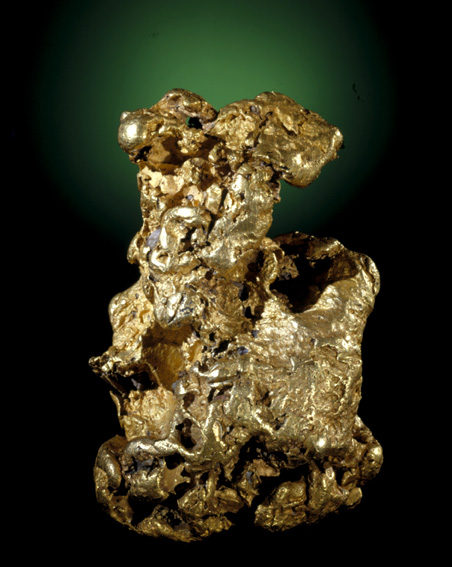 Bunyip gold nugget, 1972
Bunyip gold nugget, 1972
TLF ID R6367
This is a gold nugget known as the 'Bunyip nugget'. It weighs 50 ounces (1.55 kg). It was found in the early 1970s by a farmer while ploughing near Bridgewater to the west of Bendigo in Victoria, and was purchased by the National Museum of Victoria (now Museum Victoria) in 1978 for $40,000.
